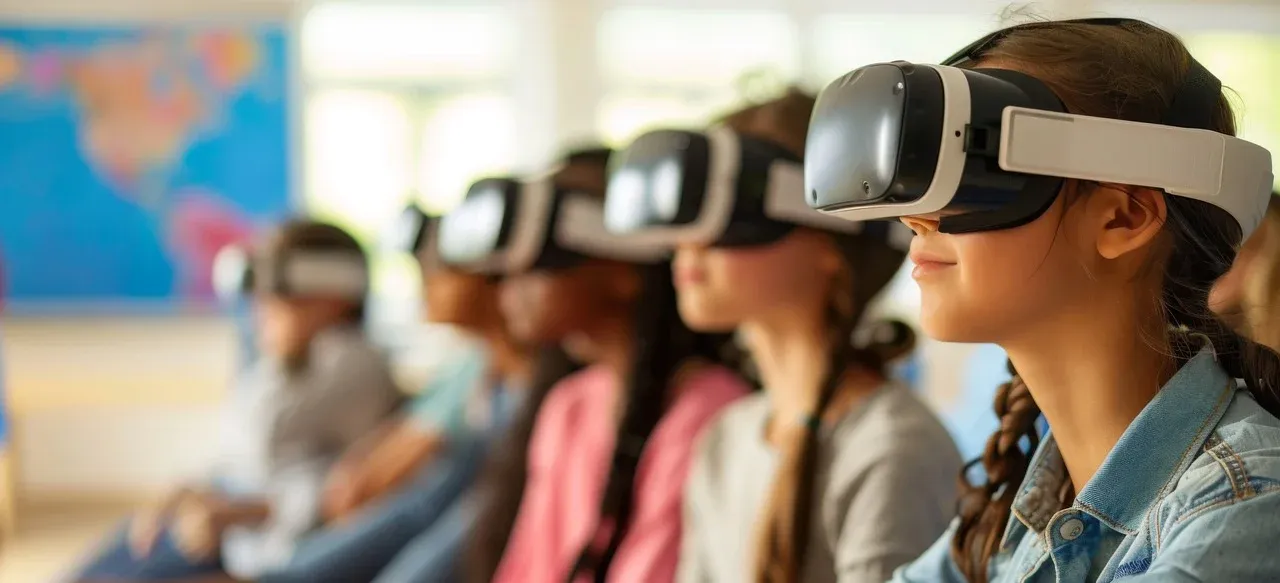Augmented and Virtual Reality: How Is It Transforming Our World?

Virtual reality (VR) and augmented reality (AR) technologies have revolutionized the way we interact with our environment by providing immersive experiences that were previously only found in science fiction.
These technologies have found applications across various sectors, revolutionizing industries by enhancing training, improving learning experiences, and even changing how we shop. Below, we explore some key areas where AR and VR are making significant impacts.
Casinos and Gaming
Augmented Reality (AR) and Virtual Reality (VR) technologies are revolutionizing industries worldwide, and the casino and gaming sector is no exception.
In New Jersey, where the casino industry is a pivotal part of the state’s economy, AR and VR are introducing unprecedented transformations, offering immersive experiences that were once the stuff of science fiction.
Take, for example, the integration of VR in casinos. Players can now don a headset and find themselves in a fully immersive virtual casino, complete with the sights and sounds one would expect in Atlantic City, but from the comfort of their home.
This technology is not just about replication; it’s about enhancement. It can transform a standard blackjack game into a pirate adventure on the high seas or a round of poker into a futuristic showdown.
AR adds another layer, offering interactive experiences without full immersion. Imagine walking through a casino in New Jersey, your smartphone or wearable device displaying dynamic odds, game tips, or even directing you to your favorite games. For those playing from home, AR can bring the casino to life right on their kitchen table or living room floor.
Online slots NJ offers players the ability to tap into these technologies. These games are not only about luck but also augmented interactions and narratives, further blurring the lines between gaming and storytelling.
Education and Training
In education and training, AR and VR are breaking traditional barriers. Virtual simulations created with these technologies provide students and professionals with hands-on experience without physical constraints.
For instance, medical students can perform virtual surgeries, allowing them to practice procedures in a risk-free environment. According to a study by the University of Maryland, participants using virtual reality for learning had a recall rate of 8.8% higher than those who used traditional methods.
Educators and trainers may utilize AR and VR to deliver individualized learning experiences, accommodate a variety of learning styles, and give real-time feedback. This improves knowledge retention and encourages a deeper understanding of the subject matter.
Furthermore, as these technologies become more widespread and accessible, they promise to democratize education, making high-quality learning experiences available to a broader audience, regardless of geographical and socioeconomic barriers.
Healthcare
While frequently linked to gaming, Virtual Reality (VR) is a cutting-edge technology that can potentially transform numerous sectors. Within the healthcare field, there is a growing interest in leveraging VR to enhance patient care and provider efficacy in various areas, such as surgical procedures, pain relief, physical and cognitive therapy, and mental health.
For instance, George Washington University utilizes sophisticated Virtual Reality (VR) technology for neurosurgery and thoracic surgery. This technology allows surgeons to virtually explore a patient’s brain and body before actual surgery, resulting in heightened surgical precision and awareness of the situation.
It also helps patients and their families better understand the surgical process beforehand. A study by the Harvard Business Review discovered that VR training enhanced surgical performance by 230% compared to conventional training methods.
Similarly, UConn Health is employing VR tools provided by PrecisionOS and Oculus to enrich the training experience of its orthopedic surgery residents.
This approach not only offers invaluable hands-on experience for the surgeons but also leads to significant time and cost savings compared to the traditional use of corpses, which limits residents to a single opportunity to perform specific procedures.
Retail and Shopping
Augmented Reality (AR) and Virtual Reality (VR) technologies are revolutionizing the retail and shopping landscape, offering immersive experiences that bridge the gap between digital and physical retail worlds.
These technologies enhance customer engagement, improve sales, and offer brands a unique way to connect with their consumers. AR enables customers to visualize products in their own space before purchasing, effectively reducing uncertainty and increasing satisfaction.
For instance, furniture retailers now allow shoppers to see how a piece would look in their living room, adjusting for size, color, and style through an AR-enabled app.
However, virtual reality (VR) goes one step further by immersing clients in a fully virtual setting. From the comfort of their homes, they can browse virtual stores, virtually try on clothing using digital avatars, and make well-informed purchasing selections.
This level of interactivity and immersive shopping can significantly enhance the customer experience, leading to higher conversion rates and repeat business while allowing retailers to stand out in a highly competitive market.
Conclusion
Augmented and Virtual Reality technologies are reshaping our world unprecedentedly, touching nearly every aspect of our lives. AR and VR blur the digital and physical boundaries, opening up countless opportunities for innovation in various industries. As these technologies evolve, we can expect to see even more creative applications that will further transform our interactions with the world around us.



